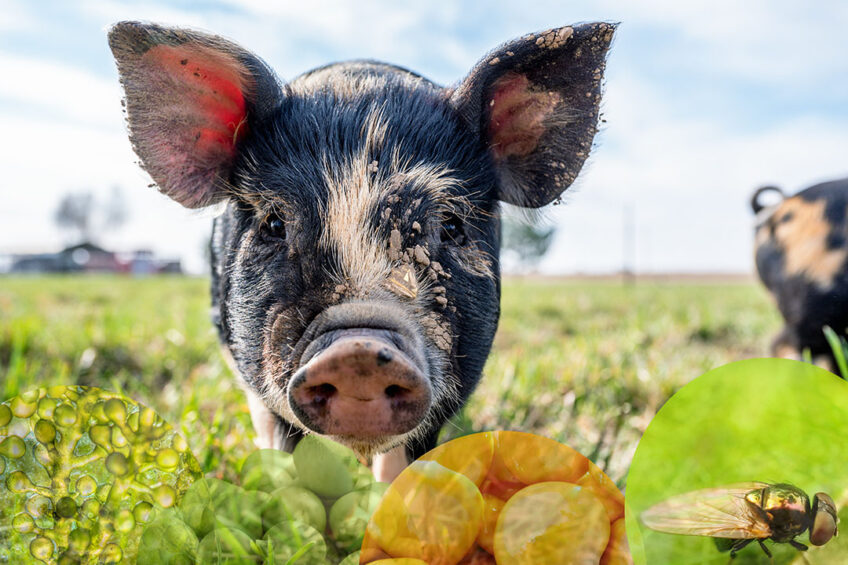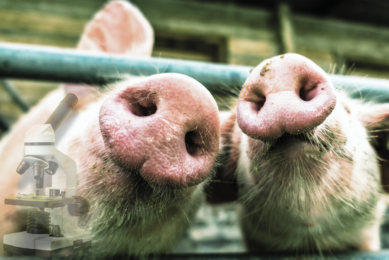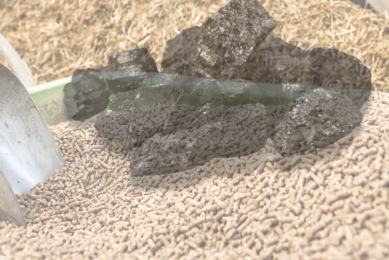7 alternative protein sources for pig diets

Sustainable development of the pig industry requires an improved protein utilisation rate from new protein sources with lower carbon footprint and land use. This article will discuss 7 alternative protein sources in the pig’s diet.
The most common protein source in pig diets is soybean meal. However, with high soybean prices, the feed industry is looking for efficacious new protein sources to prevent lower pig performance, mitigate adverse environmental impacts, and reduce the cost of the daily ration.
Selection of new protein sources
Factors including amino acid profile and digestibility, energy content, the presence of anti-nutritional factors, variability in nutrient concentration, cost, production goals and lysine content need to be considered when selecting a protein source for pig diets.
 Field peas
Field peas
Field peas are a good source of energy and crude protein for pigs as they contain essential amino acids such as lysine, although methionine levels are relatively low. Field peas are suited to different climates which makes them a promising alternative to soybean meals in regions that are not suited to their production. Field peas contain trypsin inhibitors and saponins which reduce feed intake and nutrient digestibility. However, their extrusion at a temperature of approximately 115◦C increases the apparent and standardised ileal digestibility of crude proteins, amino acids, and starch and energy supply in growing pigs, thus increasing growth performance and improving the feed conversion ratio.
 Lupins
Lupins
Lupins are leguminous plants that contain 35% protein, soluble and insoluble fibre, slowly digested starch, micro- and macronutrients, vitamins and numerous bioactive phytochemicals such as flavonoids and other antioxidants. In addition, mechanical removal of the thick, fibrous seed coat of lupins increases their protein content further. The inclusion of hulled lupins in pig diets improves their nutritional value by increasing the feed intake and feed conversion ratio compared to whole seeds. Research studies suggest that lupins can be used in pig diets in proportions from 10 to 30%, depending on the age of the animals.
 Insect meal
Insect meal
The black soldier fly, common housefly and yellow mealworm are a few examples of sources of insect meal.
The black soldier fly has been used in pig diets without compromising growth performance, feed intake, the digestive use of nutrients or gut morphological characteristics. Common house flies increase the amino acid digestibility of diets and the carcass fat contents. Yellow mealworm larvae in weaning and growing pigs’ diet improve growth performances and amino acid digestibility.
 Lemna
Lemna
Lemna, commonly known as duckweed, is a rapidly growing aquatic plant with approximately 68% crude protein which makes it a potential alternative to soybean meal. In addition, further processing increases the protein concentration, ensuring a reliable and consistent product. Lemna protein concentrate contains a greater concentration of gross energy, lower concentration of phosphorus and higher amino acid digestibility than soybean meals.
 Microalgae
Microalgae
Microalgae contains up to 45% protein content, with a balanced content of essential amino acids, vitamins, minerals, pigments, carotenoids, chlorophyll and essential polyunsaturated fatty acids, making it a potentially valuable ingredient. Microalgae in pig diets improves growth performance, carcass weight and pork quality including lower intramuscular fat.
 Milk and milk by-products
Milk and milk by-products
Milk provides a high-quality palatable digestible protein. Dried milk contains 37% crude protein, 2.4% lysine, and 48% lactose. In addition, dried whey concentrate and casein are alternative high-quality protein sources used in young pig diets. Whey concentrate contains 76% crude protein and 6.9% lysine while casein comprises 89% crude protein and 6.9% lysine. Adding dried milk and died whey concentrate improves weight gain by up to 11%.
 Yeast proteins
Yeast proteins
Hydrolysed yeast-derived protein from Saccharomyces cerevisiae is a highly digestible protein source. Adding yeast proteins to nursery diets increases growth performance, crude protein digestibility, villus height, villus height to crypt ratio and immunity and reduces inflammation, faecal pathogen count and diarrhoea in early weaned piglets.
Concluding remarks
Soybeans are the main source of protein in pig diet formulation; however, in recent years the use of soybeans has been limited due to rising prices, their environmental impact and competition for land use. New proteins including field pea, lupins, insect meal, lemna, microalgae, milk and milk by-products, and yeast protein are among potential sustainable soybean substitutes. However, further research is required to assess their cost-effectiveness and their impact on carcass and pork quality.











